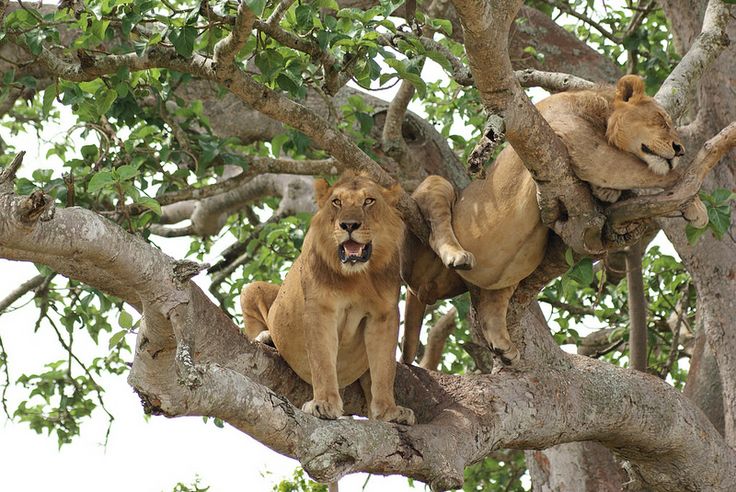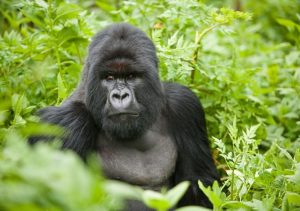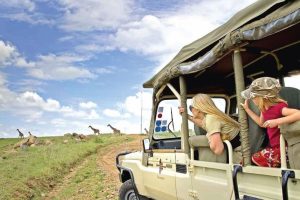What are tree climbing lions?
Tree climbing lions are a rare behavior observed in some populations of lions, where individuals regularly climb trees and rest on branches. Unlike the typical behavior of lions in savannah habitats, which are ground-dwelling predators, these lions exhibit arboreal tendencies. They often climb trees to escape heat, avoid biting insects, gain a vantage point for observing prey, or simply to relax. Tree climbing lions are not a separate species but represent a unique behavioral adaptation observed in certain regions of East Africa, particularly Uganda.
Why do some lions in Uganda climb trees?
Lions in Uganda climb trees for several ecological and behavioral reasons. One primary reason is temperature regulation. In hot climates, tree branches provide shade and cooling breezes. Additionally, climbing trees helps lions avoid nuisance insects like tsetse flies, which are prevalent in savannahs and wetlands. Another factor is territorial observation; elevated perches allow lions to spot prey or monitor other predators. Some scientists also suggest that tree climbing could be a learned behavior passed down within specific prides, making certain populations unique in their arboreal tendencies.
Where in Uganda can you see tree climbing lions?
Tree climbing lions in Uganda are mostly found in Queen Elizabeth National Park, particularly in the Ishasha sector, located in the southwestern part of the park near the Democratic Republic of Congo border. This region is famous for its lions that regularly climb acacia and fig trees. Other parts of Uganda occasionally report tree-climbing behavior, but Ishasha remains the most consistent and famous location for tourists seeking this rare phenomenon. Guided safaris to this area offer the best chance to witness lions perched on branches.
Are tree climbing lions common in Uganda?
Tree climbing lions are not widespread across Uganda, making them a rare and unique attraction. Only a small percentage of lion populations exhibit this behavior. While typical lions in other parks like Murchison Falls or Kidepo Valley are primarily terrestrial, the Ishasha lions are particularly noted for climbing multiple meters into trees. The rarity of this behavior adds to its appeal for tourists and wildlife enthusiasts visiting Uganda.
How do tree climbing lions behave compared to regular lions?
Tree climbing lions exhibit behaviors similar to ground-dwelling lions in hunting, social interactions, and territoriality, but their arboreal habits differentiate them. They often rest on branches during the heat of the day and descend to the ground to hunt in the early morning or evening. While regular lions rest in tall grasses or under shade, tree climbing lions prefer elevated resting spots, making them easier to observe and photograph for visitors. They also sometimes use trees as vantage points to monitor other predators or prey movement.
What makes tree climbing lions unique to Uganda?
The Ishasha lions of Uganda are considered globally unique because lion tree-climbing behavior is rarely seen in most parts of Africa. While similar behavior has been occasionally observed in Tanzania’s Lake Manyara National Park, the concentration and consistency of tree climbing lions in Ishasha make it a distinctive ecological phenomenon. Their behavior provides scientists and tourists alike with insights into adaptability, predator behavior, and environmental interactions.
Can you see tree climbing lions on a safari?
Yes, tree climbing lions are a major attraction for safari-goers in Uganda. Game drives in the Ishasha sector of Queen Elizabeth National Park are specifically organized to locate and observe these lions. Tours are guided by experienced rangers who know the locations of favorite trees and lion prides. Early morning and late afternoon drives are ideal for sightings, as lions are more active and often change resting spots. Safari vehicles maintain a safe distance while providing clear views for photography and observation.
What national parks in Uganda are known for tree climbing lions?
The primary park known for tree climbing lions in Uganda is Queen Elizabeth National Park, especially the Ishasha sector. While lions in other parks like Murchison Falls National Park and Kidepo Valley National Park are less likely to climb trees, they still offer exceptional wildlife viewing. Queen Elizabeth National Park’s diverse habitats, including savannahs, wetlands, and riverine forests, create ideal conditions for the tree-climbing behavior. The park is also home to elephants, buffaloes, leopards, and over 600 bird species, making it a comprehensive wildlife safari destination.
What is the best time to see tree climbing lions in Uganda?
The best time to observe tree climbing lions is during the dry seasons, from June to September and December to February. During these months, the grass is shorter, and lions are easier to spot as they move between trees or rest on branches. The dry season also provides better road conditions for safari vehicles and clearer skies for photography. While lions climb trees year-round, visibility is higher during dry months compared to the rainy season when thick vegetation may obscure views.
How safe is it to observe tree climbing lions?
Observing tree climbing lions is generally safe when done with licensed guides and safari vehicles. Lions are wild predators, and rangers ensure that vehicles maintain a safe distance to prevent stress or aggressive behavior. Visitors are instructed not to leave the vehicle, make loud noises, or attempt to approach lions. Following park rules and guide instructions guarantees a safe and enjoyable experience while witnessing this rare wildlife phenomenon.
Do tree climbing lions pose a danger to humans?
Tree climbing lions, like all wild lions, are potentially dangerous if approached. However, the lions in Uganda’s Ishasha sector are accustomed to safari vehicles and do not typically perceive humans in vehicles as threats. Most sightings occur at a safe distance. Tour guides emphasize strict safety protocols, including staying inside the vehicle and not feeding or provoking the lions. As long as visitors follow these guidelines, the risk is minimal.
Are tree climbing lions different from lions in other African countries?
While lions across Africa share similar physical characteristics, the behavioral adaptation of climbing trees is relatively rare. Lions in most regions, including the Serengeti, Kruger, and Etosha, remain terrestrial. Uganda’s Ishasha lions and some in Tanzania’s Lake Manyara stand out due to this unique behavior. Tree climbing in lions is not genetically different but represents a local ecological adaptation to specific environmental pressures, such as temperature, insect density, and habitat structure.
How do guides help tourists spot tree climbing lions?
Guides play a crucial role in locating and observing tree climbing lions. Experienced rangers are familiar with lion pride territories, favorite trees, and activity patterns, allowing them to direct safari vehicles efficiently. Guides provide educational commentary about the lions’ behavior, ecology, and conservation. Their expertise ensures that tourists can safely view lions from optimal positions while minimizing disturbance to the animals.
What other wildlife can you see when looking for tree climbing lions?
While searching for tree climbing lions, tourists can encounter other wildlife in Queen Elizabeth National Park. These include elephants, buffaloes, leopards, hippos, giraffes, and antelopes. Birdwatchers will enjoy spotting over 600 bird species, including fish eagles, kingfishers, and African skimmers. Wetland areas along the Ishasha River may also host crocodiles and Nile hippos. This combination of predators and herbivores makes a tree climbing lion safari a rich wildlife experience.
Can tree climbing lions be photographed safely?
Yes, tree climbing lions are an excellent subject for photography. Safari vehicles provide safe vantage points, and guides ensure lions are not disturbed. Photographers should use telephoto lenses to capture detailed shots without approaching the animals. Early morning and late afternoon light offers the best conditions for photography. Observing lions in trees allows unique and dramatic compositions that differ from typical ground-level lion images.
How do tree climbing lions affect Uganda’s tourism?
Tree climbing lions are a significant tourism draw for Uganda. Their rarity and unique behavior attract wildlife enthusiasts, photographers, and adventure travelers from around the world. The Ishasha sector has become a must-visit destination for safaris, boosting local economies through park fees, accommodations, and tour services. Promoting this phenomenon also raises awareness about wildlife conservation and Uganda’s ecological diversity.
Are there conservation concerns regarding tree climbing lions?
Yes, tree climbing lions face conservation challenges similar to other lions, including habitat loss, human-wildlife conflict, and poaching threats. Queen Elizabeth National Park provides protection through rangers, anti-poaching patrols, and community engagement programs. Conservation initiatives focus on maintaining natural habitats, monitoring lion populations, and educating local communities on coexistence. Protecting tree climbing lions ensures the survival of this unique behavior and supports broader ecological balance.
Can you combine tree climbing lion sightings with other safari activities?
Yes, tree climbing lion safaris can be combined with various activities. Visitors can enjoy game drives, boat cruises along the Kazinga Channel, chimpanzee trekking in Kibale Forest, or cultural village visits. Multi-day tours allow travelers to experience Uganda’s diverse landscapes, including lakes, forests, and savannahs, while focusing on tree climbing lion sightings in Ishasha. This combination makes for a comprehensive wildlife and cultural adventure.
What are some interesting facts about tree climbing lions?
- Tree climbing lions often rest on branches up to 6 meters high.
- This behavior is mostly observed in adult males and females, but juveniles may also climb.
- Lions use trees to escape heat and insect harassment.
- Ishasha lions’ arboreal behavior is considered unique in the world, with very few similar populations elsewhere.
- Observing lions in trees provides insight into behavioral adaptability and predator ecology.
Which tour operators offer safaris to see tree climbing lions in Uganda?
Several licensed tour operators provide safaris focused on tree climbing lions in Uganda. These operators arrange transportation, park entry, accommodations, and guided game drives. Many companies offer customized itineraries, combining tree climbing lion sightings with gorilla trekking, chimpanzee tracking, and other safari adventures. Booking through licensed operators ensures safety, expert guidance, and compliance with Uganda Wildlife Authority regulations.




